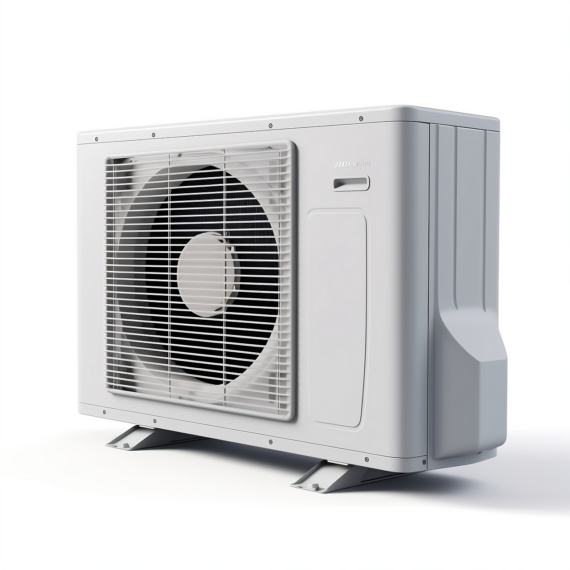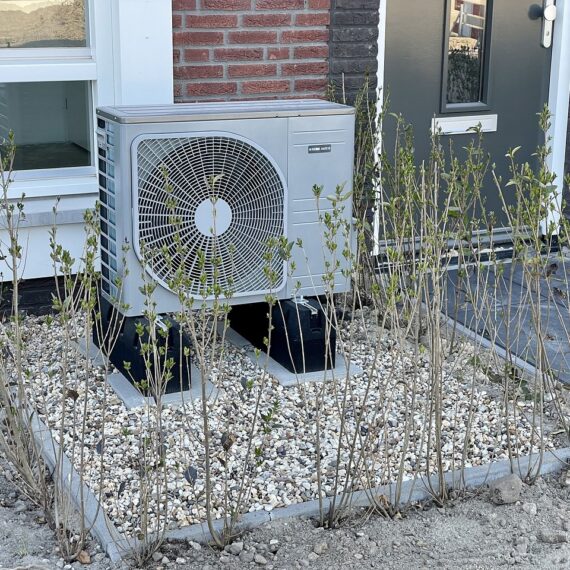Heat pumps are commonly used for both heating and cooling purposes in residential and commercial settings. Over the last few years, heat pumps have gained significant popularity as a sustainable and cost-effective alternative to traditional HVAC systems. But how do heat pumps work? In this article, we will explore the inner workings of heat pump technology, exploring its components, heat transfer process, energy efficiency, environmental benefits, common applications, and operation tips.
What is a Heat Pump?
At its core, a heat pump is a device that transfers heat from one location to another using mechanical work. It operates by extracting heat energy from one space and transferring it to another space. A heat pump uses a refrigeration cycle similar to that of an air conditioner, but it can work in reverse. This means it can extract heat from outside air (even when it’s cold) and bring it inside, or it can remove heat from inside and release it outside, depending on whether you want heating or cooling.

Components of a Heat Pump System & What They Do
There are different types of heat pumps available, including air source, ground source (geothermal), and water source, each with its unique advantages and applications. But, to understand how heat pump technology works, it’s essential to familiarize ourselves with its key components and the role they play in heat pumps.
- Refrigerant: Heat pumps use a refrigerant, a special fluid with properties that allow it to easily change between gas and liquid states at low temperatures. The most common refrigerant used in residential heat pumps is a hydrofluorocarbon (HFC) compound.
- Evaporator Coil: The heat pump system starts in the evaporator coil, which is located indoors. When the heat pump is in heating mode, the evaporator coil absorbs heat from the surrounding air. This heat can be derived from the outside air, the ground (in geothermal heat pumps), or water sources (such as lakes or wells).
- Refrigerant Absorption: As the evaporator coil absorbs heat, the refrigerant inside it evaporates, transforming from a liquid to a gas. This evaporation process draws thermal energy from the surrounding air, cooling it in the process.
- Compressor: The gaseous refrigerant, now carrying the absorbed heat, is then compressed by the compressor. The compressor increases the pressure and temperature of the refrigerant, causing it to become even hotter.
- Condenser Coil: The high-pressure, high-temperature refrigerant gas now enters the condenser coil, which is located outside the house. In the condenser coil, the refrigerant releases its heat to the outside environment (e.g., the outdoor air). As a result, the refrigerant begins to condense, transforming back into a liquid state.
- Expansion Valve: After leaving the condenser coil, the high-pressure liquid refrigerant passes through an expansion valve or metering device. The expansion valve reduces the pressure of the refrigerant, allowing it to expand rapidly. This expansion causes a drop in temperature.
- Indoor Coil: The cooled and low-pressure refrigerant enters the indoor coil, where it absorbs heat from the indoor air when the heat pump is in cooling mode. The process is reversed compared to the heating mode. The refrigerant evaporates again, absorbing heat and cooling the indoor air.
- Air Handler: In both heating and cooling modes, an air handler blows air over the indoor coil, transferring the heat to or from the air, depending on the mode. The conditioned air is then distributed throughout the home using the existing ductwork or a ductless system.
- Repeat Cycle: The refrigerant, now in a gaseous state after absorbing heat in the indoor coil, returns to the compressor, and the cycle starts again.
Reversible Heat Transfer Process
It’s important to note that heat pumps can be reversible, meaning they can switch between heating and cooling modes. By reversing the flow of the refrigerant, the heat pump can either absorb heat from the outside air and transfer it indoors (heating mode) or extract heat from the indoor air and release it outside (cooling mode).
In the heating mode, the refrigeration cycle begins with the heat pump extracting heat from the external environment, such as the air, ground, or water. The absorbed heat is then compressed by the compressor, increasing its temperature. Finally, the heated refrigerant is transferred to the indoor space through the condenser, where it releases the heat, warming the desired area. Conversely, in the cooling mode, the refrigeration cycle is reversed, extracting heat from the indoor space and transferring it to the external environment.

How Does A Heat Pump Warm A Home?
A heat pump warms a home by extracting heat from the outside environment and transferring it indoors. Here’s a more detailed explanation of how a heat pump accomplishes this:
- Heat Absorption: In heating mode, the heat pump’s evaporator coil, located indoors, absorbs heat from the outside air, ground, or a water source. The evaporator coil contains the refrigerant, which is at a low pressure and temperature. As the refrigerant passes through the coil, it absorbs thermal energy from the surrounding air.
- Refrigerant Evaporation: The absorbed heat causes the refrigerant to evaporate, transforming it from a liquid to a gas. This process is facilitated by the low pressure inside the evaporator coil. As the refrigerant evaporates, it gains more heat from the air, further cooling the surrounding environment.
- Compression: The gaseous refrigerant, carrying the absorbed heat, is then compressed by the compressor. The compressor increases the pressure and temperature of the refrigerant, significantly raising its thermal energy.
- Heat Release: The high-pressure, high-temperature refrigerant gas now enters the condenser coil, which is located outside the house. In the condenser coil, the refrigerant releases its heat to the indoor environment. The heat is transferred from the refrigerant to the indoor air or water that circulates through the coil.
- Heat Distribution: The heated air or water is then distributed throughout the home using an air handler and ductwork or a radiant system. The air handler blows air over the heated indoor coil, warming the air, which is then circulated through the ductwork and delivered to various rooms. In a radiant system, the heated water flows through pipes embedded in the floor or radiators, releasing heat into the room.
- Refrigerant Replenishment: After releasing its heat, the refrigerant, now cooled and in a liquid state, returns to the evaporator coil to repeat the cycle. It passes through an expansion valve or metering device, which reduces its pressure, causing it to cool further and prepare for the heat absorption stage again.
By extracting heat from the outside environment and transferring it indoors, the heat pump effectively warms the home. This process allows heat pumps to provide energy-efficient heating solutions, as they use minimal electricity to operate the compressor and fan motors, relying primarily on the heat energy present in the outside air or ground.
How Does A Heat Pump Cool A Home?
A heat pump cools a home by removing heat from the indoor air and transferring it to the outside environment. Here’s a detailed explanation of how a heat pump accomplishes this cooling process:
- Heat Absorption: In cooling mode, the heat pump’s indoor coil, also known as the evaporator coil, absorbs heat from the indoor air. The indoor coil contains the refrigerant, which is at a low pressure and temperature. As warm indoor air passes over the coil, the refrigerant absorbs the heat from the air.
- Refrigerant Evaporation: The absorbed heat causes the refrigerant to evaporate, transforming it from a liquid to a gas. This evaporation process is facilitated by the low pressure inside the evaporator coil. As the refrigerant evaporates, it extracts more heat from the indoor air,
- Compression: The gaseous refrigerant, now carrying the absorbed heat, is then compressed by the compressor. The compressor increases the pressure and temperature of the refrigerant, significantly raising its thermal energy.
- Heat Release: The high-pressure, high-temperature refrigerant gas now enters the condenser coil, which is located outside the house. In the condenser coil, the refrigerant releases the heat it absorbed from the indoor air to the outside environment. This heat is transferred from the refrigerant to the outdoor air or ground.
- Heat Dissipation: As the heat is released, the refrigerant undergoes a phase change, transforming from a gas back into a liquid. The heat is dissipated into the outdoor environment, allowing the refrigerant to cool down.
- Refrigerant Replenishment: The cooled and liquid refrigerant returns to the indoor evaporator coil to repeat the cycle. It passes through an expansion valve or metering device, which reduces its pressure, preparing it for the heat absorption stage again.
During the cooling process, the heat pump extracts heat from the indoor air and releases it outdoors, resulting in a cooling effect inside the home. The cooled indoor air is then circulated throughout the house using an air handler and ductwork, providing a comfortable indoor temperature.
Energy Efficiency of Heat Pumps
One of the significant advantages of heat pump technology is its energy efficiency. Heat pumps can provide up to four units of heating or cooling for every unit of electricity consumed. This efficiency stems from the fact that they move heat rather than generate it. Compared to traditional heating and cooling systems, heat pumps can significantly reduce energy consumption and utility costs. However, factors such as proper insulation, climate conditions, and accurate system sizing can affect the overall energy efficiency of a heat pump installation.
Common Applications of Heat Pump Technology
Heat pumps find applications in various sectors. In residential settings, they are used for heating and cooling homes, providing year-round comfort and cost savings. In commercial and industrial environments, heat pumps offer efficient climate control for large spaces. Heat pump water heaters are also gaining popularity as an energy-efficient alternative to traditional water heaters. Additionally, geothermal heat pumps utilize the consistent temperature of the Earth to provide sustainable heating and cooling.
Maintenance and Troubleshooting Tips
To ensure optimal performance and longevity of a heat pump system, regular maintenance is crucial. This includes cleaning or replacing air filters, inspecting refrigerant levels, and checking the functioning of fans and motors. In case of any issues, troubleshooting steps such as checking for power supply, inspecting circuit breakers, and contacting a professional technician should be followed. Professional servicing is recommended at regular intervals to identify and address any potential problems.
Want To Learn More about Heat Pumps?
Heat pump technology offers a sustainable and efficient solution for heating and cooling needs. By understanding the components, heat transfer process, and energy efficiency of heat pumps, we can make informed decisions when it comes to implementing this technology. With its environmental benefits, versatile applications, and proper maintenance, heat pumps are poised to play a significant role in shaping the future of HVAC systems. Explore further and consult with the experts at Plan Your Energy to leverage the advantages of heat pump technology for your specific requirements.






